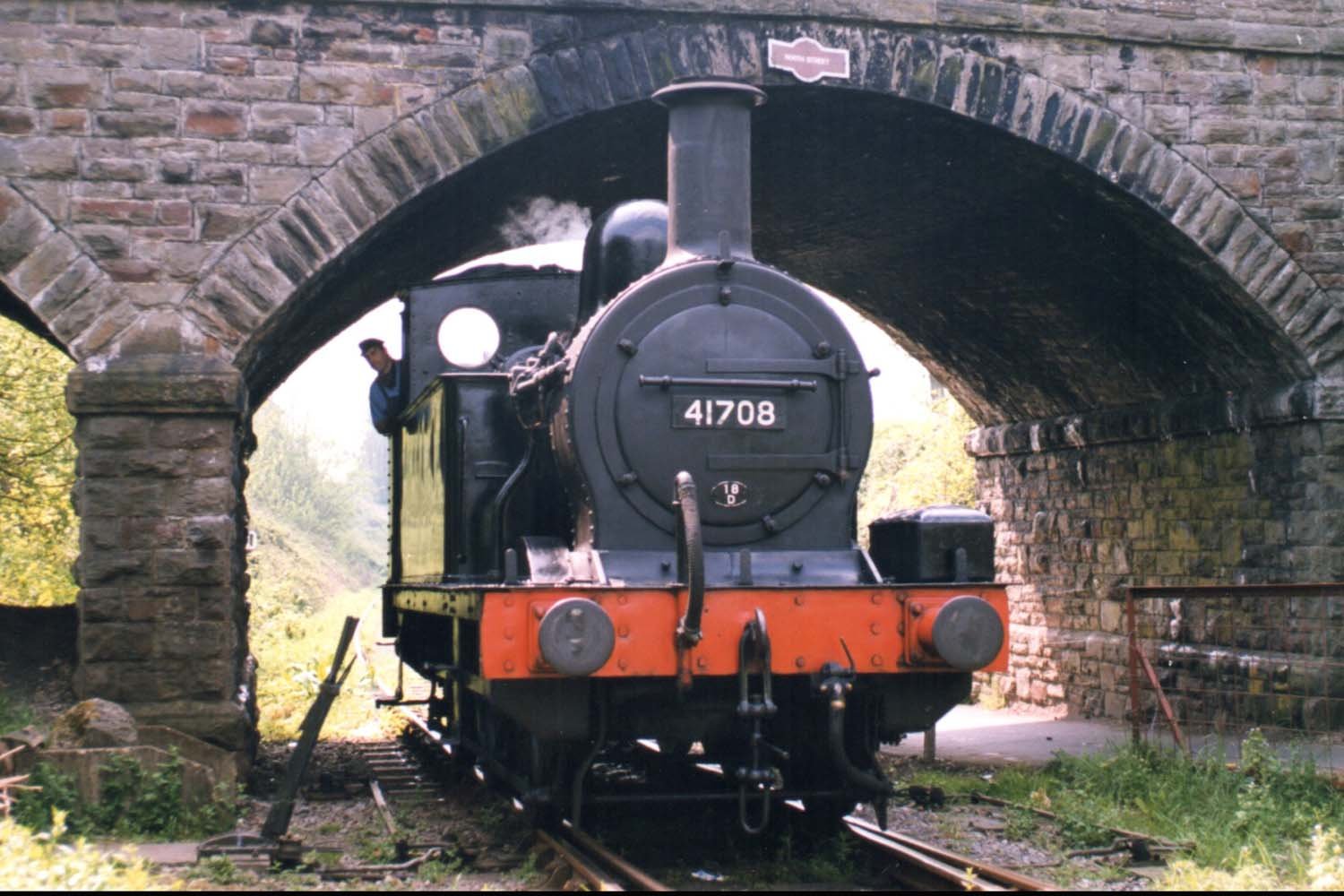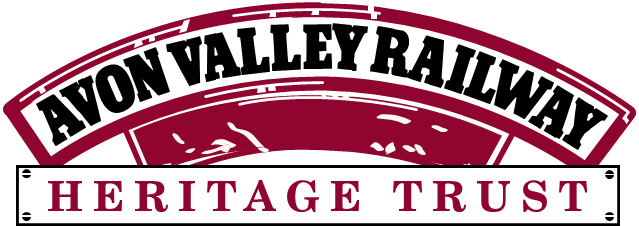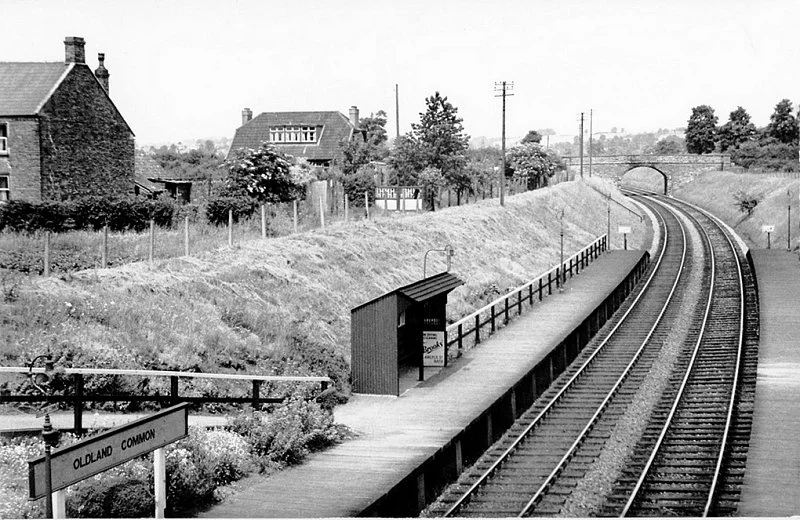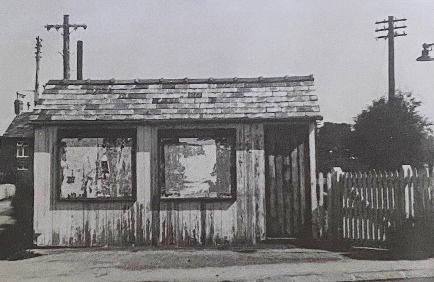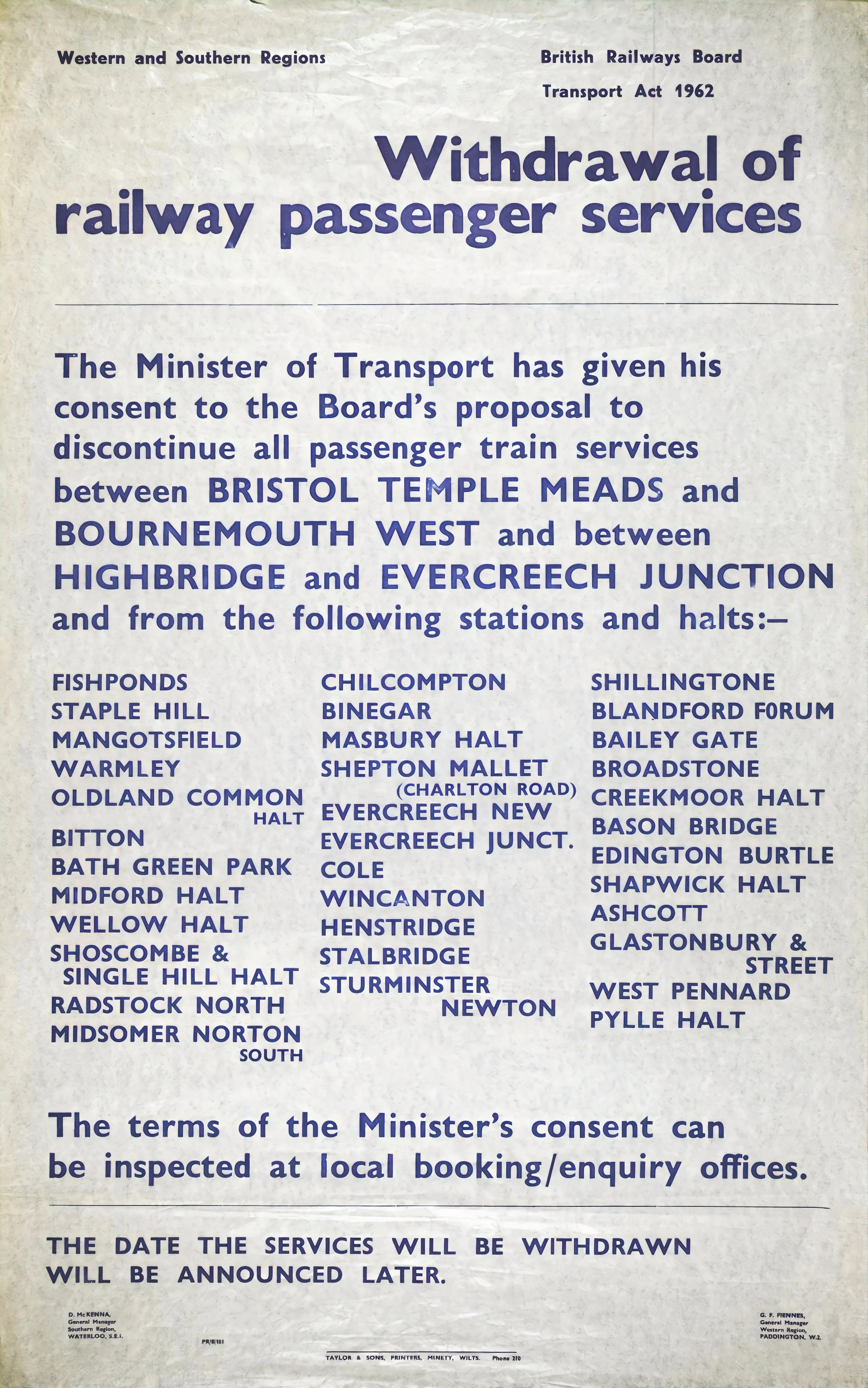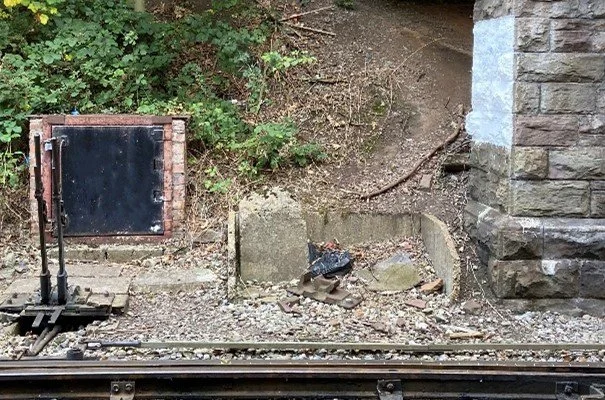Restoration of original features at Oldland Common station is currently underway as part of the Oldland Common Project, to donate towards the work and allow the installation of more exciting and interesting features, please donate here.
OPENING OF OLDLAND COMMON STATION
Oldland Common station was opened by the London Midland & Scottish Railway (LMS) on Monday 2nd December 1935. Its creation was primarily to support suburban development in the area, allowing nearby residents to easily access Bath and Bristol by rail. The station featured two wooden platforms, long enough to platform around 4 coaches each. Both platforms at the southern-most end, were relatively close the arches of North Street bridge, with ramps working their way down from either side of the bridge to platform level, acting as entrances to the station.
Looking north from North Street bridge, this image shows the condition the station would have been in when first opened. © Unknown
The platforms each had a matching, dark-coloured, corrugated iron shelter to protect passengers from the infamous British weather. These were each accompanied by a large running in board adorning the platforms. Lamps lit the entire station, these were of particular interest as it was the only station on the branch to have electric lighting, which it had from the day it opened until closure. This was due to the lack of a nearby gas main on North Street at the time. Fittingly, today’s incarnation of the station also uses electric lighting.
The station also featured attractive wooden fencing along the length of the platforms and ramps to North Street bridge, these were painted black and topped with white top rail, this can be seen in the photo displaying original ‘opening day’ condition. In addition, at the top of the Up platform ramp, at road level, you could also find the station’s small ticket office building, this was of wooden construction and rectangular shape.
Oldland Common’s ticket office building, seen after closure of the station. This side of the building opens out to North Street, with the gate seen on the right providing access to the Up platform. © W F Grainger
During the pre-war LMS period, the lamp posts also featured fetching blue and yellow station signs placed below the lamp shades. Similar versions could be seen at across some other LMS stations, with the yellow colour likely selected to allow the text to be easily distinguished at night. This is akin to LMS black and yellow hawkeye running-in boards. One of the original lamp signs from Oldland Common has been preserved in the Avon Valley Railway museum collection, and is pictured below.
It's worth noting the station featured no signals and no signal box. Other than a few occasional parcels, the station also had no goods facilities. To consolidate this, Bitton’s station master was also in charge of the station’s operation. This was due to the simple nature of the station and with it being a late addition to the line. Ironically though, it is said that when Oldland Common opened, it quickly found itself with more patronage than Bitton.
Original LMS Blue & Yellow Oldland Common lamp post sign © Avon Valley Railway
THE LATER YEARS OF THE STATION
After the war, in 1948, British Railways was formed, with the Oldland Common initially taken under the control of the Midland region. This was until 1958 when the Western region saw the takeover of the entire branch, including Oldland Common station.
During these periods of change, the station saw many features change. The fencing along the platforms was removed, the blue and yellow lamp post signs disappeared, and the waiting shelters’ exteriors were repainted in a cream colour. As well, the running in boards on both platforms were changed for different versions, still of course reading Oldland Common though. These running in boards heavily varied between each platform, with a much larger variant found on the Down platform.
In late 1964, the station became unstaffed, with British Railways changing its status to ‘Oldland Common Halt’, which can be seen on various railway documents after this point.
Looking south towards North Street bridge from the Up side in the mid-1960s, the station, with its associated changes are seen. © C Maggs
CLOSURE
Closure of the station was initially announced in June 1965 amidst withdrawal of all passenger services on the branch, with closure posters seen along the branch featuring ‘Oldland Common Halt’, as shown.
The closure of the branch eventually came on the 7th March 1966, and due to Oldland Common’s simple construction, it was swept away by British Rail soon after, leaving little trace of the original station.
However, the line continued to be used for coal trains to Bath gasworks, and was singled through the site of the station in 1968, leaving only the original Up line passing through. A notable feature that remained for a period, even after closure of the station and singling of the line, was on the south side of North Street bridge, adjacent to the Up line. There could be found a platelayer’s hut.
The ‘Withdrawal Of Railway Passenger Services’ poster supplied by BR, featuring Oldland Common Halt, the other remaining stations on the branch, and the famous Somerset & Dorset © Science Museum Group
Looking south towards West Street bridge from North Street bridge. Hymek D7087 travels up on the singled line towards the camera. The platelayers hut can be seen adjacent to the line. 20th June 1969. © A Hireson
The remaining track was closed and lifted in mid-1971 with the conclusion of these goods services due to the arrival of North Sea gas, brining rail through Oldland Common to an end… for a short while!
OLDLAND COMMON IN PRESERVATION
The first extension of the Avon Valley Railway saw track extended northwards, from Bitton, to the site of Oldland Common station. When Oldland was finally reached, a run around loop was constructed and opened on the site on the 29th March 1991. This was then followed by the construction of a platform on the Down side, resurrecting the original station, albeit, in a new form. This opened to the public on the 6th December 1997. The new platform is around 50% longer to allow the platforming of an entire 6 coach train, and is also sited a short distance further North, now sitting equally between North Street and Redfield Edge bridges. The platform is also now of much more substantial construction, and currently only features an array of lamp posts along its length. The station currently remains the Avon Valley Railway’s northern terminus.
Construction of the new platform at Oldland Common in approximately 1996. © G Ashton
Recently, a group within the railway, have started the ‘Oldland Common Project’. This is an initiative to reimagine the station under the control of the Western Region, set around 1965, shortly before closure, seeing with the restoration original features. Hopefully you’ll be able to see these exciting changes happening soon.
If you wish to contribute towards the restoration of Oldland Common station, please donate here…
HISTORY TO LOOKOUT FOR…
Next time you travel to Oldland Common, take a moment to notice some interesting features. Adjacent to North Street bridge, you’ll find the remains of an original ballast bin, which was installed at an unknown point in the line’s history. These stored ballast chippings for platelayers who maintained the line.
Remains of the ballast bin at Oldland Common, adjacent to the North Street bridge. © J Dean
Another interesting feature is the ramp pedestrians and cyclists use to access the Bristol & Bath Railway Path from the Up side of North Street bridge. This is the original ramp that historically allowed passengers to access the non-extant Up platform, for trains towards Bristol.
The original Up platform access ramp which now forms access to the Bristol & Bath Railway Path from North Street bridge. © J Dean





